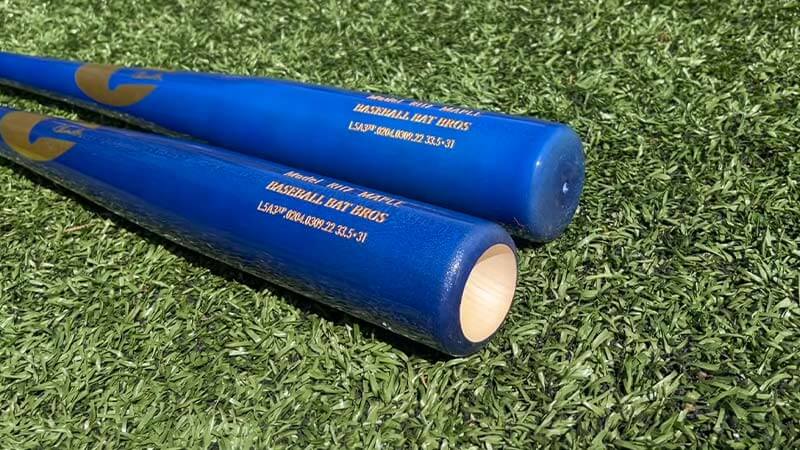“The crack of the bat has long been one of the iconic sounds of America’s pastime.” Baseball bats have a rich history intertwined with the evolution of the sport itself. From the early days of town ball played with found sticks to the precisely engineered bats of today, the basic shape and purpose has remained the same. Yet under the surface, bat technology has steadily advanced along with players’ skills and strength. The iconic hole punched in the barrel end of metal and composite bats serves an important engineering function, optimizing performance through design.
This hollow chamber displaces mass to where it is most needed – improving swing speed, barrel flex, and impact force transference. Far from an arbitrary feature, the end cap and barrel-end hole on modern baseball bats represent decades of innovations in materials, testing, and regulations.
Their development allows today’s bats to be lighter, stronger, and more balanced than ever. This iconic hole links eras of America’s pastime, reminding us that inside every new bat still lives the crack that cheers fans today like generations before.
History of Baseball Bats

Baseball originated as a game in the mid-1800s in the United States, emerging as a variant of rounders and other early bat-and-ball games. The first baseball bats were improvised from available wooden objects, often tree branches or hand-carved clubs. Early baseball players experimented with bat length, weight, taper, and design as the game evolved.
According to the Smithsonian Magazine, baseball bats were initially much thinner and lighter than modern bats. Players in the mid-1800s often chose bats around 32-38 inches long and 2-2.5 pounds. As baseball grew in popularity and became more competitive, players began modifying bats to gain an advantage. Bat weights increased to 3 pounds or more, shapes evolved, and handles were carved to improve grip.
By the late 1800s, bat manufacturers like Hillerich and Bradsby had emerged, experimenting with machine-turned bats. Louisville Slugger bats gained popularity in the 1900s as new designs like the “bottle bat” allowed players to swing faster with more power. Bat regulations were gradually introduced, including limits to bat length and weight. While wooden bats remain iconic, alternative bat designs emerged in the 1970s, including metal and composite bats. Bat innovation continues today, fine-tuning weight, grip, and bat “sweet spot” to optimize performance.
Purpose of the Barrel
The barrel is the section of the bat that makes contact with the ball. The design of the barrel is optimized to generate maximum bat speed and hitting power. Factors like the bat’s weight, balance, and distribution of mass in the barrel impact the speed the batter can swing the bat and the energy transferred to the ball on impact.
The ideal barrel design depends on the batter’s strength, swing mechanics, and personal preference. For adult baseball bats, barrels are typically 2.5 to 3 inches in diameter. The thickness of the barrel wall also varies, with thicker barrels providing more mass behind the batted ball while thinner barrels may allow faster swing speeds. Engineers refine barrel designs to optimize performance through computer modeling, player testing, and regulations on bat specifications. In the end, the barrel is crafted to harness the batter’s power and make the ball jump off the bat.
Purpose of the Taper
The taper of a baseball bat refers to the gradual narrowing of the barrel down to the thin handle. This transition serves an important engineering purpose in bat design and performance.
The thick barrel region allows for a greater hitting surface and momentum transfer into the ball at impact. However, swinging a bat with a thick barrel throughout would be difficult to control and make contact due to the weight distribution.
Therefore, bat manufacturers utilize a tapered design. This allows players to maintain control and swing accuracy with the thin handle while maximizing power from the thick barrel. The taper creates an optimized weight distribution and balance point to achieve both bat speed and barrel control.
Specifically, a flared taper like Lizard Skins provides an extended sweet spot and trampoline effect. The taper enables an ideal combination of swing control, speed and hitting power in modern bat engineering.
Purpose of the Knob
The knob on the bottom of a baseball bat serves two key purposes – to stop the hands from slipping, and to provide grip and control (Slugger Museum). By flaring out wider than the bat handle, the knob helps lock the bottom hand into place and prevent it from sliding down when swinging. This gives the batter better control and whip when swinging for maximum power.
The knob’s design also enhances grip. Its rounded shape and textured surface provide friction to keep the hands from slipping off, especially if the bat gets wet from rain/sweat. The added friction allows the hands to grip tighter without sliding, letting the batter control bat orientation better. Proper hand positioning and grip are vital for swinging accuracy and hitting the ‘sweet spot’ of the bat barrel. So the humble knob plays a key but underappreciated role in optimizing swing mechanics and batting performance.
Purpose of the End Cap
The end cap on a baseball bat serves several important purposes related to bat performance and durability. First, adding some weight to the end of the bat helps distribute mass and balance the bat for optimal swing speed and power transfer. By concentrating more mass in the barrel end, the end cap helps increase bat momentum as it swings through the hitting zone.
Second, the end cap protects the fragile end of the bat from damage. Without an end cap, repeatedly hitting balls will eventually crack the thin wooden surface at the end of the bat. The end cap reinforces this area and prevents splintering. It provides a durable barrier between the ball and the bat’s vulnerable end.
Overall, the end cap is a vital component that enables baseball bats to swing properly while also protecting the bat from wear-and-tear during games. The added weight and protection allows players to confidently swing away without worrying about damaging their bats.
The Invention of the Holed End Cap

The practice of putting a hole in the end of baseball bats was invented by Gary Baum in the 1970s. Baum was a bat designer who wanted to create a bat with improved balance and weight distribution. Before his invention, bats were made from a solid piece of timber. This made the end of the bat very heavy compared to the handle.
Baum realized that removing mass from the end of the bat would allow him to redistribute that weight further down the barrel. This gave the bat a larger “sweet spot” that provided more power on contact with the ball. By drilling a hole in the end cap, Baum achieved his goal of improving the bat’s weight distribution and moment of inertia.
The holed end cap allowed bat designers much greater control over the weight and feel of the bat. It quickly became an essential feature in wooden and aluminum bat manufacturing. Today, nearly all regulated baseball bats have an end cap with a hole or holes in the end. Baum’s innovative design changed the game of baseball and improved batter performance.
Engineering of the Holed End Cap
The engineering behind the holed end cap is quite complex, as manufacturers aim to optimize bat performance through precise hole size and placement. The size and position of the end cap hole affects the swing weight and balance point of the bat, which can impact the speed and power generated by a hitter. Easton and other major manufacturers spend a great deal of R&D on end cap design to fine-tune the hole size and location.
Generally, the hole is positioned close to the center of the cap in order to centralize the weight distribution. The hole diameter ranges from 1/2 inch to 1 inch on most bats. A larger hole lowers the swing weight, shifting the balance point slightly toward the barrel end. This allows increased swing speed, but can sacrifice bat control and power potential. Smaller holes maintain a higher swing weight for more slugging power, but reduce bat whip and decrease swing speed. The sweet spot depends on the hitter’s strength, size, and personal preference.
Proper engineering of the holed end cap can optimize the bat’s moment of inertia, or resistance to twisting. Centralizing mass along the length of the bat prevents the barrel from lagging or twisting on off-center hits. This improves batting accuracy and provides a smoother, more efficient swing. Overall, the size and placement of the hole significantly impacts performance, requiring careful design optimization by manufacturers.
Regulations on End Cap Design
The end cap hole is legal in almost all baseball leagues, including MLB and NCAA. However, certain regulations apply regarding the size and depth of the hole:
-
In MLB, the hole cannot be more than 1 inch in diameter and 1 inch deep. This prevents an unfair performance advantage by altering the bat’s properties too significantly.
-
For NCAA competitions, the hole can be up to 2 inches in diameter, but no deeper than 1 inch.
-
Most amateur and recreational leagues follow the 1 inch diameter by 1 inch depth rule.
-
Some youth leagues prohibit holed end caps entirely, requiring solid end caps instead. This helps ensure a more level playing field for developing players.
-
All leagues prohibit holes that are too large, deep, or oddly shaped, as they could allow players to shave interior bat walls or insert foreign materials for unfair advantage. Umpires routinely inspect end caps before games.
-
The hole diameter must be consistent top to bottom – funneling or tapering holes are prohibited.
-
End caps cannot contain moving parts or loose interior weights.
-
Wall thickness around the perimeter of the hole must comply with the league’s overall bat standards.
So in summary, a holed end cap is permissible in most baseball leagues, but with restrictions on hole size and depth to prevent unfair alterations to bat performance characteristics. Umpires diligently check bats before games to enforce these rules.
Conclusion
Baseball bats have come a long way since the early days of the sport. The engineering innovations like the tapered handle, knob, and holed end cap have made bats easier to swing and control for hitters. These developments were focused on maximizing the bats’ performance through modifying weight distribution and bat speed.
The precise engineering of modern bats is a continually evolving science, as companies test new materials and designs in the quest to create the highest performing bat. But no matter how much bats transform over the years, the soul of the sport remains in the crack of a wooden bat striking a ball on a summer day. Baseball remains a timeless game where technology strives to enhance an ancient athletic ritual passed between generations. The bat in a player’s hands connects to a rich history of innings played long ago.








